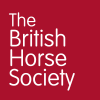Dressage, the elegant and refined art of horse training, has evolved over centuries, shaped by the wisdom and expertise of masterful practitioners. From the ancient teachings of Xenophon to the profound insights of Nuno Oliveira, these dressage masters have left an indelible mark on the discipline, influencing generations of riders and horses.
Xenophon, a Greek military leader and philosopher in the 4th century BC, is often regarded as one of the earliest dressage masters. His work, "On Horsemanship," laid the groundwork for classical dressage principles, emphasizing the importance of gentle and humane training methods.
Fast forward to the Renaissance era, and we encounter François Robichon de la Guérinière, a French riding master whose impact on dressage endures. His seminal work, "École de Cavalerie," published in 1733, provided a systematic approach to training horses, emphasizing lightness, balance, and harmony between horse and rider.
The 19th century witnessed the contributions of Gustav Steinbrecht, a German cavalry officer whose book, "The Gymnasium of the Horse," outlined the importance of systematic training and gymnastic exercises. Steinbrecht's emphasis on the horse's physical and mental well-being laid the foundation for modern dressage.
François Baucher, a 19th-century French cavalryman, brought a controversial yet influential perspective to dressage. His ideas, outlined in works such as "Méthode d'Equitation Basée sur de Nouveaux Principes," challenged traditional methods, advocating for a more nuanced and individualized approach to training. While Baucher's methods were met with resistance, his impact on dressage theory is undeniable, and his influence can be traced in modern discussions about horse biomechanics and responsiveness.
As we move into the 20th century, the name of Alois Podhajsky, director of the Spanish Riding School in Vienna, comes to the forefront. His dedication to classical principles and his role in preserving the art of haute école riding during challenging times solidified his place among the dressage greats.
The mid-20th century introduced the world to the Portuguese master Nuno Oliveira. His teachings focused on lightness, subtlety, and communication, elevating dressage to an art form. Oliveira's influence transcends disciplines, emphasizing the importance of a deep connection between horse and rider.
In the grand tapestry of dressage history, these masters, from Xenophon to Nuno Oliveira, have woven a legacy that continues to shape the way we approach and appreciate the art of classical dressage. Their timeless principles and dedication to the well-being of the horse serve as a guiding light for riders and trainers, ensuring that the legacy of dressage excellence endures through the ages. This is by no means a comprehensive list of all of the great masters of dressage, but hopefully it provides a brief insight into the history of classical dressage. If you would like to know more about the history of classical dressage, I would recommend reading Sylvia Lochs book “Dressage. The Art of Classical Riding”.



